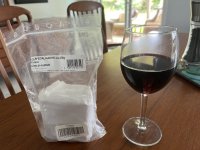Hilobox
Member
Aloha, I just joined. I have a 2013 Hohner Bravo III 72 (Chinese) with two clarinet (M) reeds in the second octave, D and F, weak only on compression. They sound weakly or not at all, and then only when the bellows are strongly closed. The reeds are on the outside of the reed block. How do I fix them or even tell what is wrong? Initially they were fine when I lived in Utah, but not here in Hawaii. No visible rust. I would greatly appreciate your advice. There is also uneven tremolo on two other notes, one fast and one slow but I am guessing that is a tuning problem. Is that right? Mahalo.

